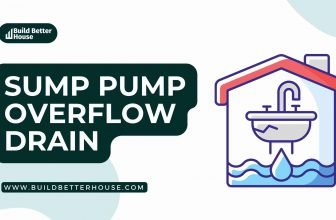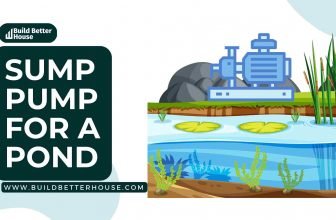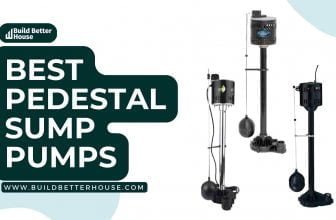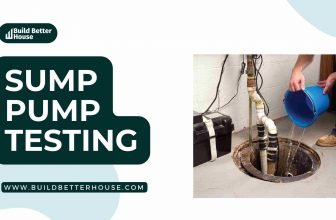What Does a Sump Pump Do: Essential Function and Benefits

Sump pumps play a vital role in protecting homes from water damage, particularly in flood-prone areas. These devices are installed in the lowest part of a home, such as the basement or crawl space, and their primary function is to drain any standing water that accumulates in those areas. They work by moving the accumulated water from a basin or pit and directing it outside or to a drainage area, thus preventing damage to the building’s foundation and keeping the basement or crawlspace dry.
Not only do sump pumps protect the structural integrity of your home, but they also help prevent serious health hazards caused by mold and mildew growth that thrives in damp environments. Various types and models of sump pumps are available, each designed to suit specific needs and home requirements. A well-maintained sump pump system and sensible basement waterproofing are crucial measures in ensuring your home stays dry, safe, and healthy.

Key Takeaways
- Sump pumps are essential for protecting homes from water damage and maintaining a dry basement or crawlspace.
- These devices prevent serious health hazards associated with mold and mildew growth in damp environments.
- Proper maintenance and basement waterproofing are crucial to ensure the effectiveness of your sump pump system.
What Is a Sump Pump
A sump pump is a device designed to remove accumulated water from a designated basin or pit, usually found in the lowest part of your home such as a basement or crawlspace. Its primary purpose is to help keep these areas dry and prevent flooding, which in turn protects the foundation of your home and reduces the chances of mold and dampness.
The sump pump features a motor that powers the system, enabling it to effectively transfer water from the pit to an outdoor drainage area or storm drain. As water enters the pit, a float or pressure switch activates the pump. When the water level reaches a certain height, the pump starts working and pushes the water out through a discharge pipe, ensuring that it is channeled safely away from your home.
There are two main types of sump pumps you might encounter: pedestal and submersible. Pedestal pumps have their motor mounted on a shaft above the pit, making them easier to access for maintenance. However, they are typically louder and less visually appealing. On the other hand, submersible pumps have their motor sealed within a waterproof housing and are placed directly in the water. This design allows for quieter operation and a more discreet appearance but may require additional maintenance due to their constant exposure to water.
In conclusion, a sump pump is an essential device for homeowners in flood-prone regions or areas with high water tables. By investing in a quality sump pump and ensuring proper installation and maintenance, you can effectively protect your home from potential water damage and keep your living environment safe and dry.
Fundamentals of a Sump Pump
A sump pump is an essential piece of equipment that plays a crucial role in keeping your home safe from water damage. The primary purpose of a sump pump is to remove excess water from your basement or crawl space, preventing flooding, mold, and mildew growth, and reducing the risk of foundation damage.
There are two main types of sump pumps you may encounter: submersible pumps and pedestal pumps. A submersible pump sits within the sump pit, completely submerged in water, while a pedestal pump is positioned with the motor above the sump pit, keeping it away from the water. Both types of pumps work similarly, but submersible pumps tend to be quieter and more efficient.
The process of removing water begins when water collects in the sump pit, usually located in the lowest part of your basement or crawl space. As the water level in the pit rises, a float switch is activated, which triggers the sump pump to begin pumping water out of the pit and away from your home. This water is typically directed to a storm drain or another safe drainage area, reducing the risk of water damage to your home’s foundation.
To ensure that your sump pump operates effectively, it’s essential to keep the sump pit clean and free from debris. Regular maintenance checks are also crucial, as they can help you identify potential issues with the pump’s components before they lead to failure, and ensure that the float switch operates correctly.
In summary, a sump pump is an essential tool in protecting your home from water damage. By understanding its primary function and the differences between submersible and pedestal pumps, you can make an informed decision for your specific needs and ensure your basement remains dry and safe.
How Sump Pumps Prevent Flooding
A sump pump is an essential device that helps to prevent flooding in your home, particularly in areas such as basements or crawl spaces. Installed in a basin or pit, it operates by removing excess water during heavy rain or storms and maintaining the water table at a manageable level. When water collects in the basin, the sump pump is activated and begins pumping the water out and away from your home, effectively preventing a wet basement.
You might wonder how this system works in conjunction with your home’s drainage. The sump pump basin is connected to your home’s drainage system, collecting water from various sources including rain, snowmelt, and groundwater around your foundation. Your home’s drainage system is typically made up of a network of drain pipes or perimeter drains that help channel water flow towards the sump basin. As water fills the basin, the sump pump ensures it is efficiently pumped out, preventing any excess water from causing a potential flood.
One of the critical factors to consider is having a backup pump in place. A backup pump can be a lifesaver, especially during extended periods of power outages or if the primary sump pump fails unexpectedly. This backup system kicks in when the primary pump is unable to operate, maintaining the necessary water removal and offering you added protection from potential flooding.
Remember that regular maintenance, inspection, and testing of your sump pump system are crucial in keeping your home dry and free from flood risks. This not only ensures the proper functioning of the pump but also helps in identifying any potential issues, allowing you to address them before they escalate into significant problems. With a well-maintained sump pump system, you can confidently tackle periods of heavy rain, storms, or increased water table levels, knowing that your home remains safe from flooding.
Types and Features of Sump Pumps
When choosing a sump pump for your home, it’s important to understand the different types and features available. This will help you select the right sump pump for your needs.
There are two main types of sump pumps: submersible pumps and pedestal pumps. Submersible pumps consist of the pump body and motor combined and are fully submerged in the water of your sump pit. This design helps prevent the pump from overheating and allows it to run longer.
On the other hand, pedestal pumps have their motors mounted on top of a long tube above your sump pit. This design keeps the motor out of the water, but it may result in a louder operation.
Aside from the primary types of sump pumps, your home may also need a battery backup system. This will ensure continuous operation during power outages, which are common during heavy storms – when the sump pump is needed the most.
When shopping for a sump pump, take note of the models and their capacity. The capacity refers to the amount of water the pump can handle per hour. Choose a model with a capacity that is suitable for the size of your basement and the amount of water you expect to deal with.
Sump pumps also come with different types of switches that activate the pump when water reaches a certain level. Common switch types include float switches and pressure-based switches. Make sure to choose a switch that is reliable to ensure your pump activates when needed.
Another critical component of your sump pump system is the discharge pipe. This is the pipe that carries the water being pumped out of your basement to a safe distance away from your home. Ensure the discharge pipe is durable, the right size for your pump, and set up correctly to avoid flooding issues.
Lastly, a check valve is a vital feature to consider when selecting a sump pump system. The check valve prevents water from flowing back into your sump pit after being pumped out, ensuring efficient operation of your system. Choose a sump pump with a high-quality check valve, as a faulty check valve can cause your pump to work harder and wear out faster.
By considering all these types and features, you will be able to find the ideal sump pump system for your specific needs and keep your basement dry and protected.
Basement Waterproofing and Sump Pumps
A sump pump plays an important role in protecting your basement from water damage. Its primary function is to remove groundwater that accumulates in your basement, particularly during heavy rainfall or snowmelt, reducing dampness and preventing issues related to moisture. By doing so, the sump pump helps to keep your basement dry and safeguard the structural integrity of your home.
One aspect of basement waterproofing involves the installation of a drainage system, including a sump pump. The system typically begins with a drain tile, a perforated pipe installed around the perimeter of your basement, either inside or outside the foundation. The drain tile collects excess water and channels it to the sump pump, which then removes the water from your basement and directs it away from your home.
Additionally, proper waterproofing involves techniques like regrading the soil around your foundation, ensuring gutters and downspouts are properly functioning, and even adjusting patios and walkways to direct water away from your home. These methods work collaboratively to prevent water from accumulating around your foundation and seeping into your basement.
When deciding on a sump pump for your basement, there are several factors to consider. The most common types of sump pumps are submersible and pedestal pumps, each with their advantages and disadvantages. Make sure to research which type is most suitable for your home and the specific circumstances you may encounter, such as the water table level, known seepage issues, or potential flooding in your area.
By incorporating a sump pump into your basement waterproofing strategy, you can have confidence that excess water will be effectively managed, reducing the risks of moisture-related problems, such as mold and mildew growth or electrical hazards. This proactive approach not only keeps your basement safe and dry but can also increase your home’s value.
Health Hazards and Preventative Measures
Sump pumps can help you maintain a safe and healthy living space by preventing water problems that could lead to health hazards. Excess groundwater or rainwater in your basement can create a breeding ground for mold, mildew, and bacteria, compromising the air quality in your home.
By installing a sump pump, you can efficiently drain standing water from your basement, which significantly reduces the risk of these health hazards. Furthermore, regularly inspecting and maintaining your sump pump can help keep it in working condition, ensuring the continuous protection of your home from potential water damage.
One additional measure you might consider is adding a water alarm to your sump pump system. This alarm alerts you if the water level in the pit becomes unsafe, usually as a result of a power outage or pump failure. This early warning allows you to address the issue promptly and avoid potential health risks.
If you live in an area with high humidity, a dehumidifier can complement the function of your sump pump. The dehumidifier reduces the moisture content in the air, further decreasing the likelihood of mold and mildew growth.
To ensure the proper function of your sump pump, pay attention to its cover and discharge system. The cover prevents debris and dirt from entering the pit, while the discharge system should be free of holes or cracks. It is essential to maintain your pump’s overall performance and the health of your living space.
In summary, your sump pump plays an essential role in maintaining a safe and healthy environment in your home. Regular maintenance and preventive measures, such as installing an alarm and a dehumidifier, can further safeguard your living space from water-related health hazards.
Additional Considerations
When choosing a sump pump to protect your home from potential basement floods, it’s essential to consider a variety of factors.
First, if you live in an area prone to severe storms or heavy snow, a sump pump is a must to prevent excessive ground water from entering your basement. You should also take into account the topography of your property; homes located in flat or low-lying areas are more susceptible to wet basements.
The material of the sump pump itself is another consideration. Cast iron pumps are known for their durability and can withstand the test of time. However, they may require more maintenance compared to their plastic or stainless steel counterparts.
Efficiency is also crucial. A sump pump with a high efficiency rating will use less energy to remove water from your basement, saving you money on utility bills. It’s important to select a pump with the appropriate horsepower for your needs – too small, and it may not be able to handle the water flow, while too large can lead to unnecessary energy consumption.
Moreover, pay attention to the drainage system connected to your sump pump. Ensure that the drain pipe and outlet pipe direct water away from your home’s foundation to avoid causing damage or contributing to a septic tank overflow.
The suction method of your sump pump also matters. Pumps with a vertical shaft, for example, may be more effective in removing water from narrow sump pits. Alternatively, a hand pump may be useful in emergencies when your main sump pump cannot handle the water load.
Lastly, consider accessories that can improve your sump pump’s performance and longevity. A garden hose attachment can be helpful for directing water further away from your home, while a battery backup can provide peace of mind in case of power outages during storms.
By taking into account these additional considerations, you’ll be better equipped to choose the right sump pump to protect your home from basement floods and water damage.
Expert Recommendations and Resources
When deciding on the right sump pump for your home, consider the type of pump, costs, and additional features to ensure the best choice to prevent flooding and water damage. Here are some recommendations and resources to help you make an informed decision.
Type of Pump: There are two main types of sump pumps: pedestal and submersible. Pedestal pumps have a motor located above the pit, while submersible pumps are entirely submerged in the pit. Consult with experts to determine which type is best suited for your specific needs.
Costs: The cost of a sump pump typically ranges from $100 to $400, while professional installation can cost between $500 and $1200. Make sure to factor in the costs of maintenance and potential replacement when budgeting for this investment.
Sump Pump Pit: The size and depth of the sump pump pit will largely depend on the size of your home and the amount of water you typically need to manage. Make sure the pit is large enough to accommodate your sump pump and the water it needs to remove.
Discharge Lines: Properly sizing and installing discharge lines will allow for efficient water removal and help prevent any backflow issues or freezing. Consult with professionals to ensure your discharge lines meet local codes and requirements.
Maintaining Your Sump Pump: Regular maintenance is crucial to keep your sump pump running efficiently. This includes cleaning the pump and pit, checking for any obstructions or debris, and testing the float switch and alarm system. Experts recommend performing maintenance at least once a year or more frequently if your pump is frequently active.
Battery Backup Sump Pump: To ensure continuous protection during power outages, consider investing in a battery backup sump pump. These systems can help prevent flooding in your home when the main sump pump is unable to operate due to a loss of power.
Alarms: Sump pump alarms can alert you to potential issues, such as high water levels or pump failure. Consider installing an alarm system to stay informed about the performance of your sump pump and to react quickly to any problems that may arise.
Consulting with Experts: It’s always a good idea to consult with professionals in the industry when selecting and installing a sump pump. They can provide valuable advice on choosing the right pump for your needs, as well as assistance with proper installation and maintenance.
Frequently Asked Questions
How does a sump pump prevent flooding?
A sump pump works by collecting water in a sump pit or basin, typically located in the lowest part of your home, such as a basement or crawl space. When the water level rises, a float switch activates the pump, which then removes the water and prevents flooding in your home by directing it outside or to a drainage area.
What are the types of sump pumps?
There are two main types of sump pumps: submersible and pedestal. Submersible pumps are placed directly in the sump pit and are more discreet, while pedestal pumps have a motor that’s positioned above the pit. Both types serve the same purpose of removing water, but submersible pumps tend to be more efficient and quieter.
How often should a sump pump be replaced?
The lifespan of a sump pump varies depending on factors like usage, quality, and maintenance. However, it’s generally recommended to replace your sump pump every 7 to 10 years. Regular inspections and maintenance can help extend the life of your pump and ensure it’s functioning properly to protect your home from flooding.
What is the average cost of sump pump installation?
Sump pump installation costs can vary depending on factors such as pump type, labor costs, and any additional work required to retrofit your home. On average, installation costs can range from $1,000 to $2,000 or more. It’s important to obtain multiple quotes from professionals in your area to ensure you’re getting a fair price.
How does water enter the sump pit?
Water enters the sump pit through perimeter drains connected to a drainage system around your home’s foundation. This system collects water from various sources, like rain, melting snow, and groundwater, and directs it to the sump pit. Appliances such as air conditioners and clothes washers may also contribute to water accumulation in the pit.
Are there any drawbacks to having a sump pump?
While sump pumps are essential for preventing flooding in many homes, there can be a few drawbacks. Sump pumps require regular maintenance and inspection to ensure they work properly. Additionally, depending on the type, they may be noisy during operation, and they can also experience mechanical failures, leading to potential water damage if not addressed immediately. Despite these drawbacks, the benefits of a sump pump far outweigh the risks, and proper maintenance can help mitigate most issues.






